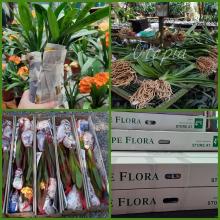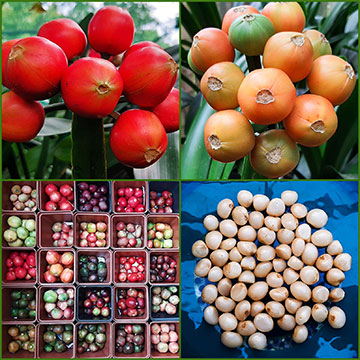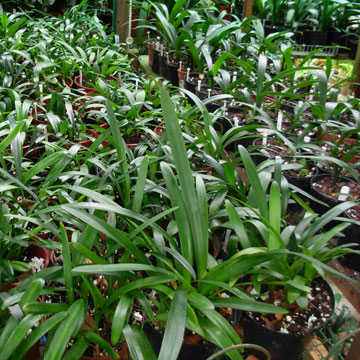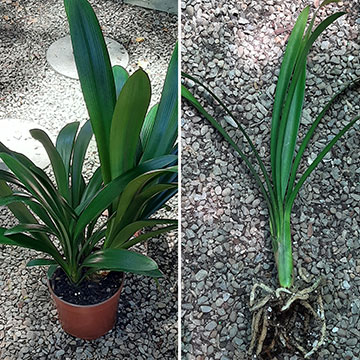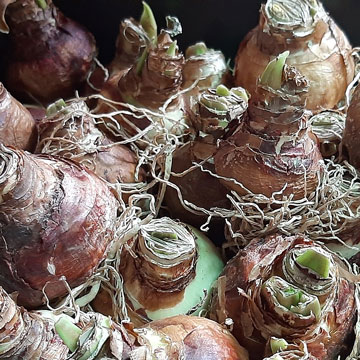To self, or not to self? Carrie Kruger Utopia Clivias SA
This is often a question many new growers ask when it comes to breeding with interspecific Clivias.
Because of the large gene pool in a single interspecific plant, results are never guaranteed. Therefore, it is advisable to grow these crosses to flowering size and to then select the best. Unfortunately, we do not all have the space to be able to bring them all into flower.
We have flowered self-pollinated F2`s that were by far superior to the parent plant. This is proof that self- pollination is a good option if you are unsure of what pollen to use on a specific flower
Here is our two cents' worth from our experience breeding with a plant named “Jupiter”
“Jupiter” was one of our first interspecific seedlings obtained from the late Johan Conradie of Stilbaai. It was bred from (Gardenii x Miniata )x( Miniata x Gardenii). When it flowered in 2012 we just selfed the plant as it flowered a bit out of season and we did not think much of the flower.
It only made five seeds which is very normal when Clivias are selfed as many of them are sterile to their own pollen. These seeds were planted in 2013. We have also found that selfed seeds tend to grow slower than cross bred seeds and seedlings are more prone to rot.
The first of these crosses eventually flowered in 2018. It was marked sibling A.
Sibling A was named “Planet earth”. It was really beautiful with large open, bell shaped flowers.
It is a small neat compact plant in comparison to the older, large long leafed interspecific varieties.
The colour is yellow cream on the inside, with a pink blush on the outer tepals and lots of green infused on the tepals.
Sibling B flowered in 2109 and was also good, but not as special as sibling A. It was a pastel pink with green overlay and nice open flowers. We did not keep this one and sold her that season.
Sibling C flowered in 2020 and this flower was simply amazing. Although not as compact as sibling A, the colours on this flower are outstanding. It is a mixture of mustard and olive green with a splash of pink as it matures. She has been named “Callisto” after one of the moons of Jupiter.
The other 2 seedlings should still flower as interspecifics can take up to six years to flower. We have seen that they often make offsets even before they have flowered.
In our experience with self-pollination is that many Clivias, especially interspecfics are sterile to their own pollen so they often set very few or no seeds at all, but the results, although few are definitely worth it.






